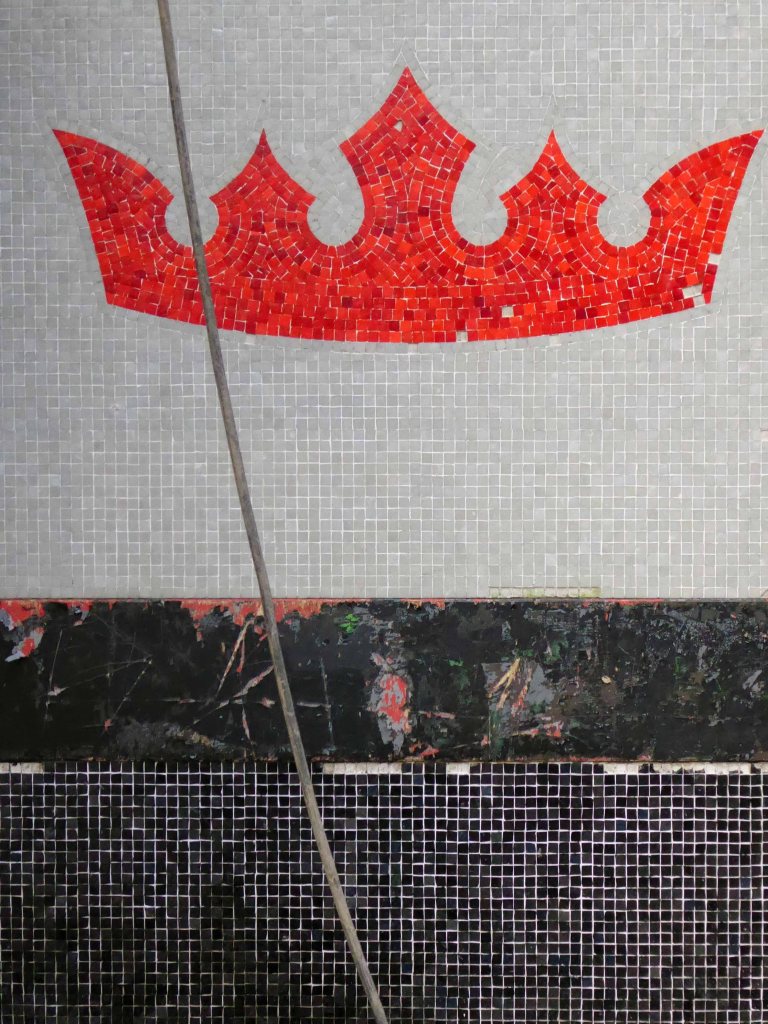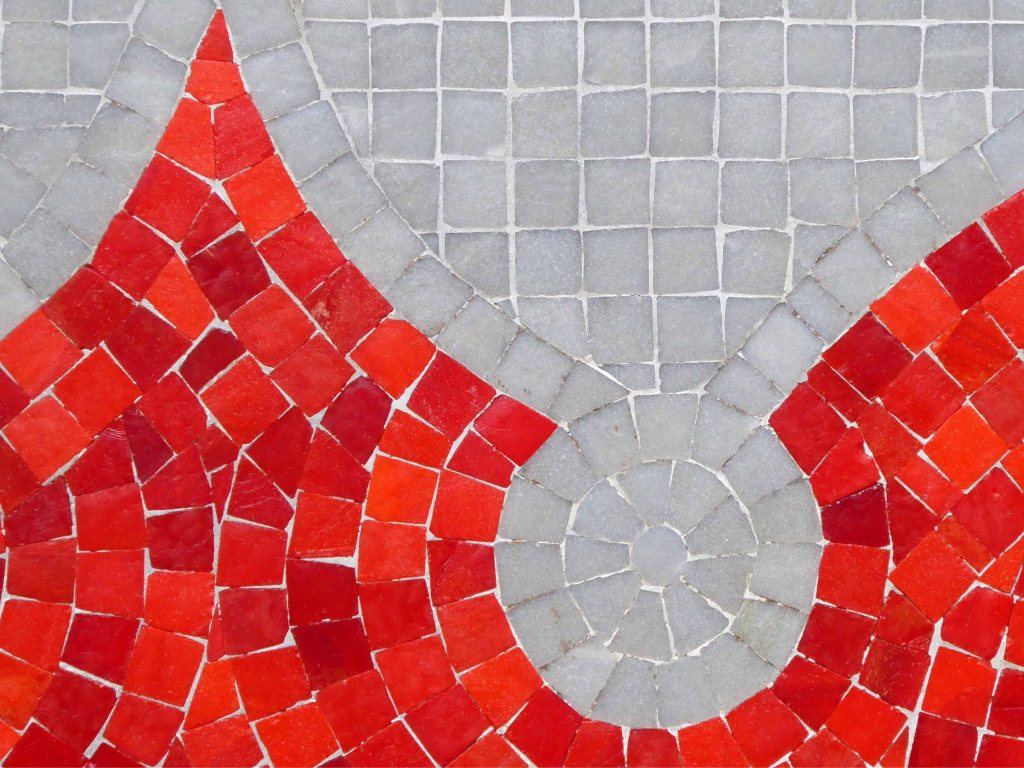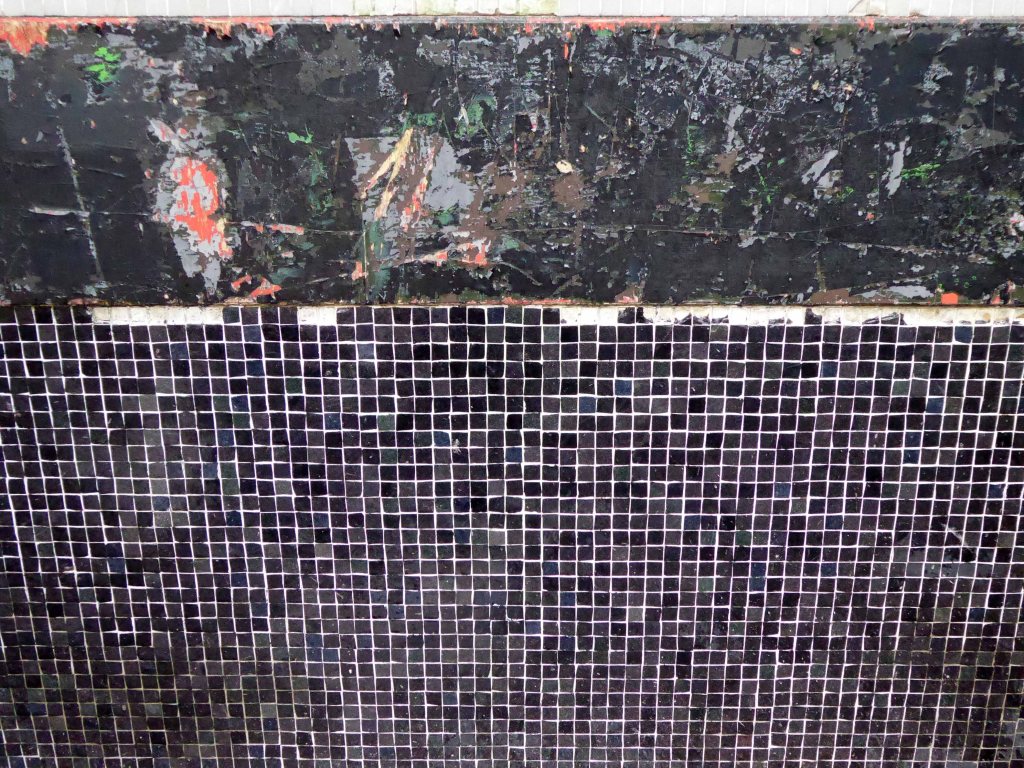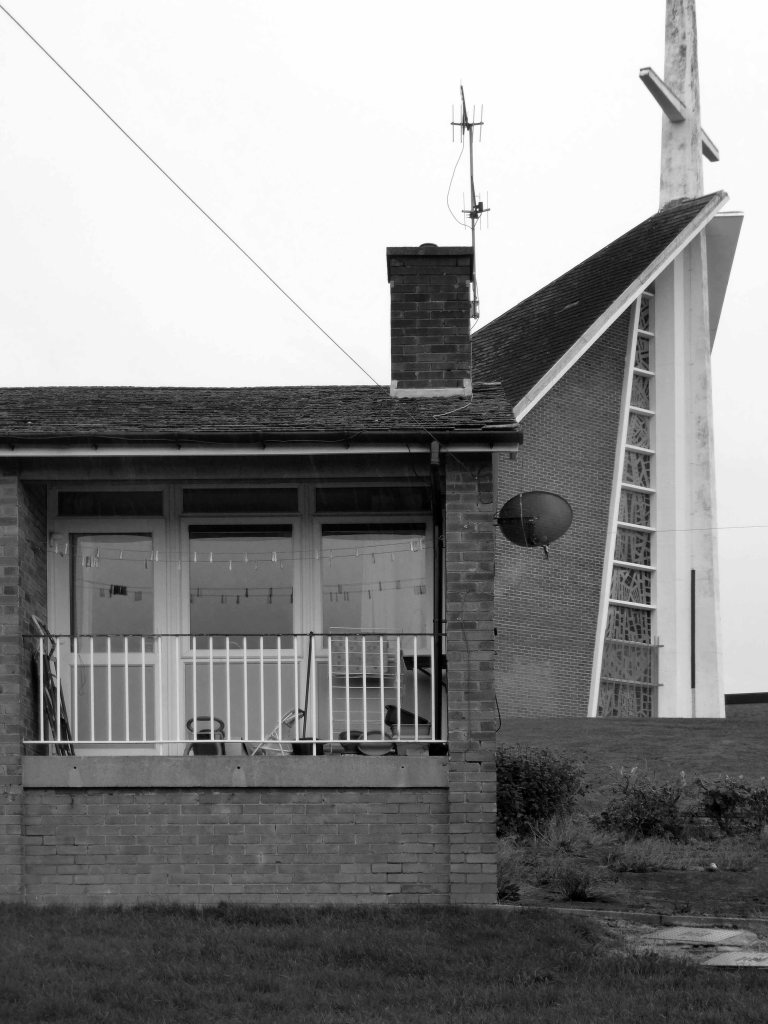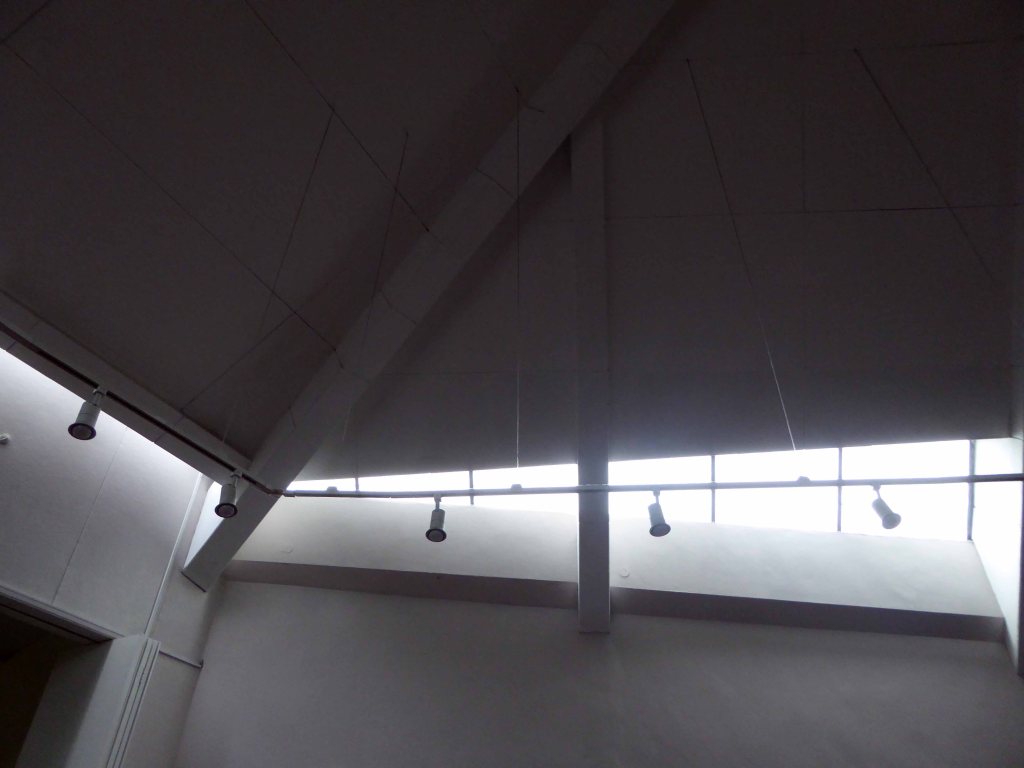
Waving Mister Larkin farewell we leave the station and head for the former Cooperative Store and latterly British Home Stores to view the magnificent Three Ships mural.

Commissioned by the Co-operative Society and designed by Wolverhampton artist Alan Boyson, this large and iconic Italian glass mosaic mural immortalises the Hull fishing fleet. The face of the mural – which is fixed to a 66 foot by 64 foot concrete screen – is composed of 4224 foot square slabs, each made up of 225 tiny glass cubes. The mural was built to Boyson’s design, by Richards Tiles Ltd
Included in the mural is the Latin text “res per industriam prosperae” – the success of industry, it also includes “HULL” in the ships’ masts.
In May 2007 the mural was locally listed by Hull City Council, who described it was a “superb example of modern public art”. The council subsequently pledged to retain the mural when the site is developed. In November 2016, a proposal by Hull Civic Society to give the mural statutory protection at a national level was rejected. The society announced its intention to appeal the decision.
The mural was placed on the National Heritage List for England on 21 November 2019 – following a long and arduous campaign by devoted local group Ships in the Sky, along with national and international Modernists.
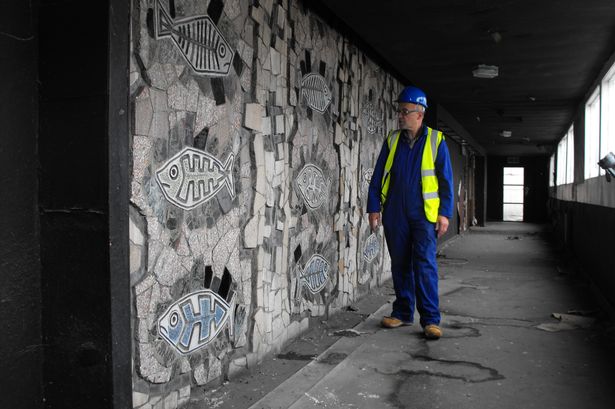
An additional mural by Boyson, inside the store on the fourth floor, was rediscovered during refurbishment in 2011. Depicting a shoal of fish, it is over 22 feet long and is made from ceramic tiles, marble and stone. Located outside the former Skyline Ballroom – later Romeo and Juliet’s, a nightclub, it had been hidden behind a false wall. The building’s then owners, Manor Property Group, announced plans to feature it in their designs for the building’s decor. It was made as part of the same commission as the exterior mural.
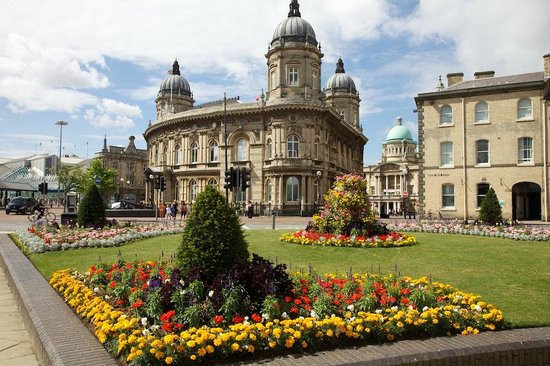
Onwards now to Queen’s Gardens – a sequence of gardens in the centre of the city. They are set out within a 9.75 acre area that until 1930 was filled with the waters of Queen’s Dock. As the dock was not fully filled in, the gardens are largely below the level of the surrounding streets.
Badly bombed by the Nazis in 1941 and rebuilding was slow and inconsistent, based on a reconstruction plan by Edwin Lutyens and Patrick Abercrombie which was never fully realised.
The plan envisioned a new civic heart for the city concentrated around Queen’s Gardens. Frederick Gibberd was employed to oversee its post-war remodelling, setting it below the surrounding road to emulate the appearance of the former docks and introducing public art to animate the space.
They are enclosed on one side by Frederick Gibberd’s Hull College.

Which incorporates this outstanding William Mitchell Relief.

A number of decorative fountains featured in the ponds; those at the eastern end designed as part of the sculptured panels of 1960, by Robert Adams, described by Herbert Read as belonging to:
The iconography of despair. Here are images of flight, of ragged claws, scuttling across floors of silent seas, of excoriated flesh, frustrated sex, the geometry of fear.
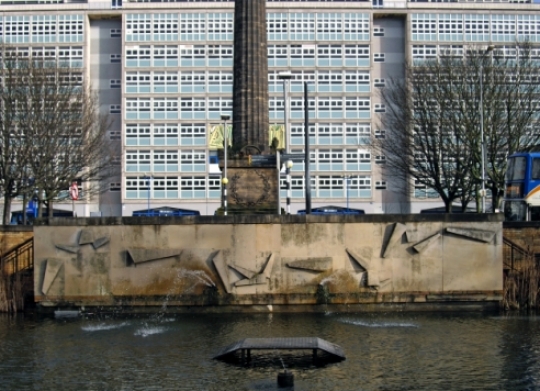
The former Police Station by Lazenby & Priestman was graced by carved stone reliefs by Kenneth Carter.


Plans are in place to convert the building into apartments.
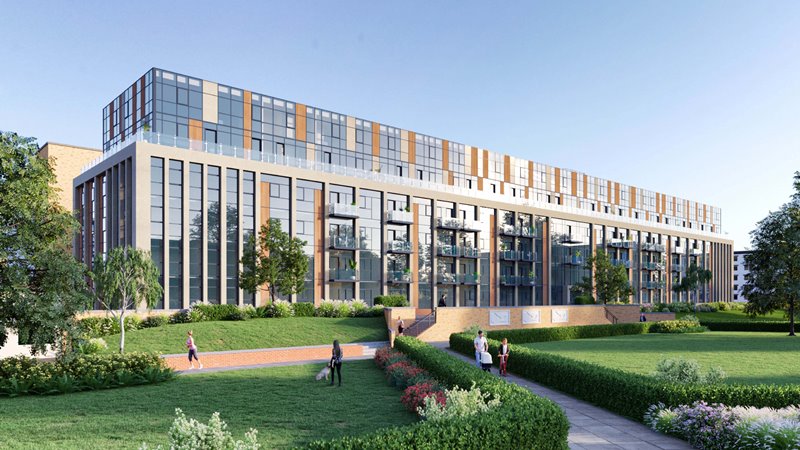
Now let’s jump a bus for St Anthony and Our lady of Mercy RC
667 Beverley Rd HU6 7JL

The church built in 1965 is fan-shaped in plan. Concrete portal frame with yellow brick infill. Shallow-pitched sheet metal clad roof. The main rear wall is flat and blind, with a parapet, and extends across the building at full height. From this wall the main body of the church radiates, three facetted bays to either side, with a saw tooth eaves line, then a projecting square block which houses the narthex and west gallery. The saw tooth eaves continue just above the entrance block to complete the fan shape. Attached to the other side of the main wall are the low, square projections of the side chapels and sacristies and a concrete framed bell tower with shallow pitched roof. The entrance block is clad is artificial stone, has a wide, glazed screen with central doors and a thin flat canopy.
Above this an inset panel of decorative mosaic by Ludwig Oppenheimer Ltd of Manchester -the firm ceased trading in 1965. The facetted elevations have large glazed areas set in a bold concrete grid of mullions and transoms, tripartite in the centre with a border of smaller divisions. The bell tower is placed in the centre of the east wall and has a port cullis-like bell-opening facing west.

The interior is a light and spacious essentially single cell, with the shallow canted projection of the sanctuary – top lit by a row of seven small circular skylights, the low side chapels and the organ gallery. The concrete portal frame provides a dramatic grid radiating from the centre of the east wall. Sanctuary fittings in contrasting marbles, by Toffolo & Son of Hull, designed as a piece. Similar marble altar in the northeast side chapel. The chapels have subtle shallow-pitched arches. West gallery also with circular skylights. Organ pipes at either end arranged within a striking double-curve enclosure, like a grand piano in plan. Open-backed pews and original light fittings. Stained glass by Leo Earley of Earley & Co. of Dublin. Stations of the Cross, wooden relief panels set within integral frames, somewhat stark.
Onward now to Hull University campus in search of the Gulbenkian Building – Cottingham Road HU6 7RX

Drama teaching centre incorporating a fully adaptable theatre. 1967-9 by Peter Moro for the University of Hull’s Department of Drama. Michael Heard partner in charge, Clarke Nicholls & Marcel structural engineers, Theatre Projects Limited lighting and sound consultants. Concrete beam construction with red brick panels restricted to the ground and first floors, board marked concrete, copper-clad roof.
Date first listed – September 15th 2015
Next to Middleton Hall, an important post-war listed building at the University of Hull, is a recent case revealing critical gaps in our historic protection system. It is set for a raft of damaging alterations and extensions, but if listing had been dealt with earlier, we could have had a very different outcome.

Middleton Hall and non-denominational Chapel, and Faculty of Arts building Larkin Building. Designed in 1962 by Sir Leslie Martin, built in 1965-7 for the University of Hull. Concrete and load-bearing brick construction, externally pale red brick cladding and lead roofs. The pipe organ is excluded from the listing.
Historic England

















